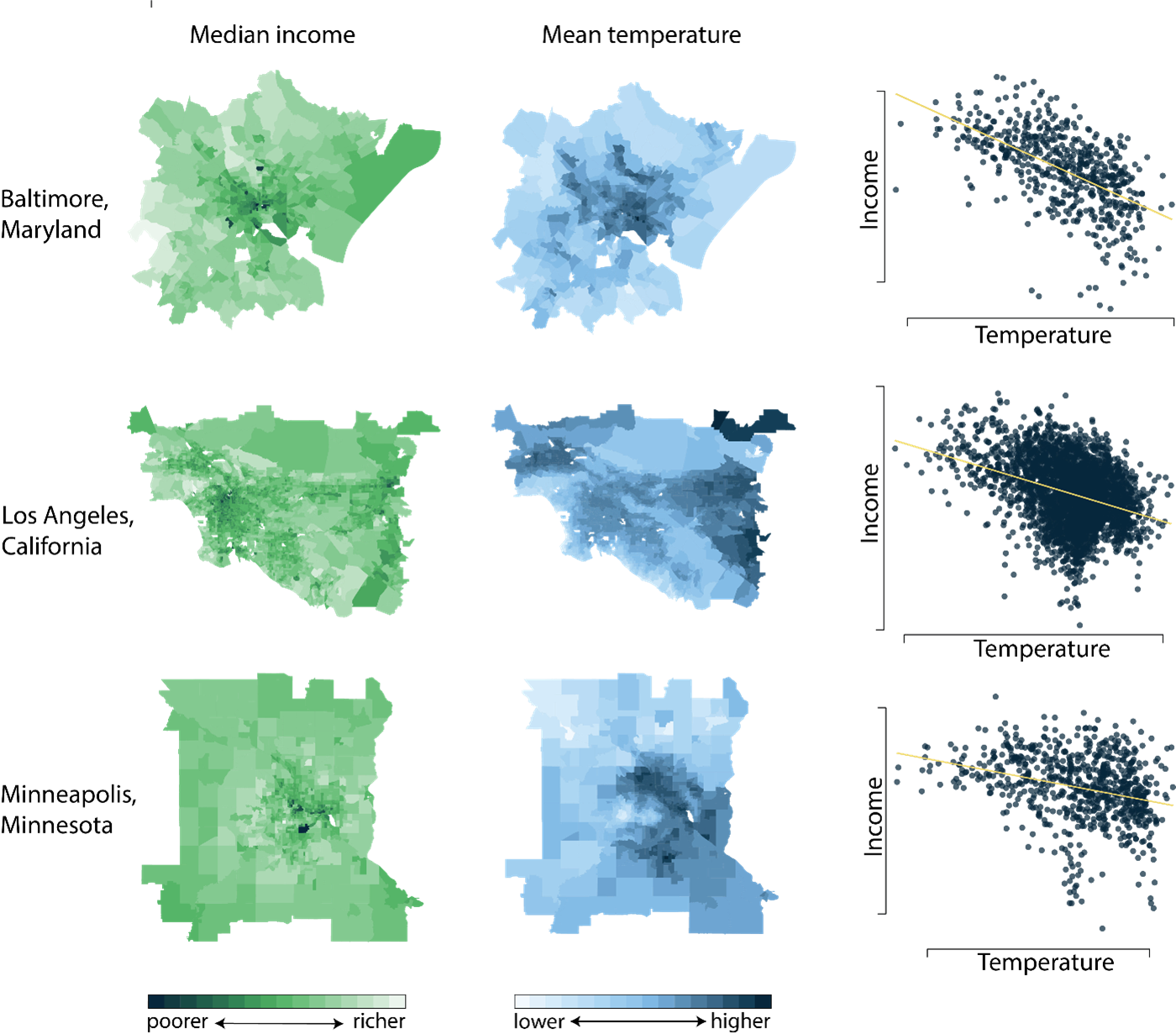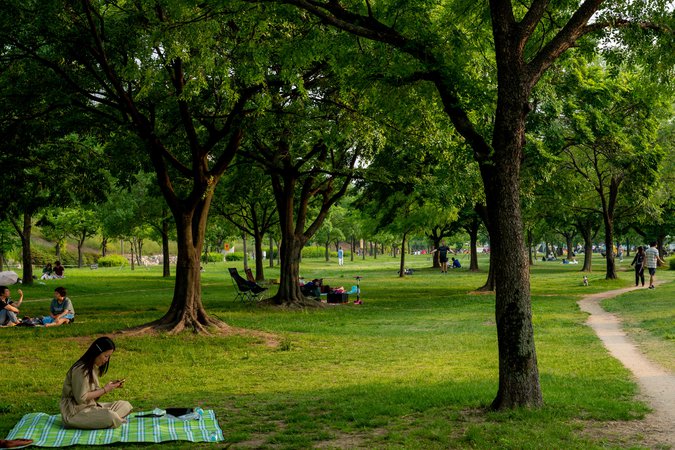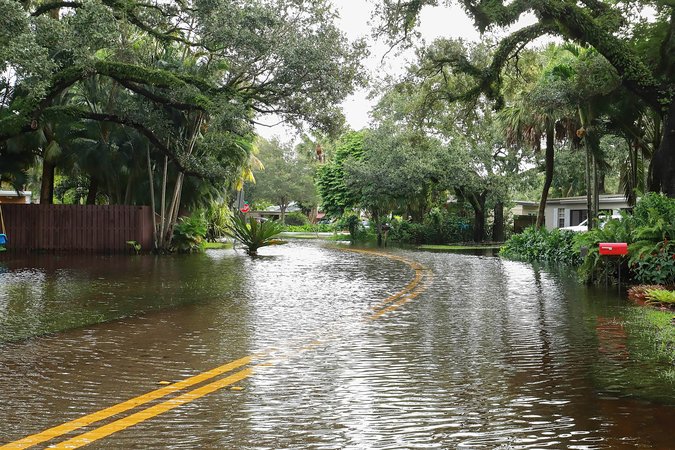Urban Heat Islands 101
This explainer details how heat islands increase temperatures, how different communities are impacted by high urban temperatures, and what can be done to mitigate their negative impacts.
Introduction
More than half of the world’s population now lives in urban areas. While urbanization has accelerated economic development in many ways, it has also created a number of environmental problems. One such problem is the creation of the urban heat island effect, defined as the increase in temperature caused by the built environment. Scholars have long observed that local temperatures in cities are higher than those in surrounding rural areas due to differences in land cover, urban geometries, and heat released by human activity. When they contribute to extreme heat, urban heat islands are more than just uncomfortable; they can lead to lasting negative impacts on people and the economy.
This explainer details how heat islands increase temperatures, why they are of concern, how different communities are impacted by high urban temperatures, and what can be done to mitigate their negative impacts.
How much do urban heat islands increase temperatures?
Studies estimate that heat islands increase daytime temperatures in urban areas in the United States by about 1°F to 7°F and nighttime temperatures by 2°F to 5°F. In general, cities with the largest and densest populations experience the greatest temperature differences. In fact, it’s estimated that highly developed urban areas can experience mid-afternoon temperatures 15°F to 20°F higher than surrounding vegetated areas.
Even within a city, some areas are hotter than others. Neighborhoods with more heat-absorbing buildings and pavement, and with fewer cooling green spaces, have the most elevated temperatures. Downtown and industrial areas tend to be hotter than urban parks and less densely populated residential areas.

What features of the built environment cause heat islands?
Heat islands form as a result of altered landscapes in cities. Some of the main contributing factors are:
- Urban surfaces. Human-made building materials such as pavement and concrete reflect less sunlight and absorb more heat than natural surfaces. These urban surfaces quickly heat up during the day and slowly release heat at night, contributing to higher temperatures around the clock in cities. In contrast, natural landscapes such as trees, vegetation, and water bodies cool the air by providing shade, transpiring water from plant leaves, and evaporating surface water.
- Urban geometries. Tall buildings can create an urban canyon effect that blocks wind flow and traps heat near the surface where humans can feel it.
- Anthropogenic heat. In cities, people drive cars, run air conditioning units, and operate buildings and industrial facilities in close contact with each other—activities that generate waste heat that increases local temperatures. When these heat-generating activities are concentrated over small areas, they can have significant impacts on the microclimate.
- Urban greenhouse effect. Urban atmospheres usually contain higher concentrations of pollutants and have higher water vapor content. Combined with warmer air, these factors can trap and amplify heat above cities.
How is an urban heat island measured?
The magnitude of heat islands is difficult to pin down because temperature differences vary widely both between and within cities, across seasons, and depending on the temperature measure. Urban heat islands can be measured in terms of air temperatures, surface temperatures, or a combination of the two. Air temperatures reflect the conditions experienced by people and are therefore useful if the goal is to understand the public health risks posed by heat islands. Surface temperatures represent the heat energy given off by the land, buildings, or other urban surfaces, and can be particularly relevant for informing strategies to mitigate heat islands. The surface heat island effect varies much more in intensity than the air temperature heat island effect.
Recent technological advancements in temperature monitoring have greatly increased our understanding of heat islands and their distributional consequences. Traditionally, urban heat islands were measured by taking the difference in temperature between the city center and surrounding rural areas as measured by ground-based temperature monitors. In the last several decades, satellite-derived measures of air temperature have allowed for continuous mapping of the heat island effect across urban landscapes. Most recently, distributed monitor networks and community science have allowed for even more detailed mappings, such as those produced by the National Oceanic and Atmospheric Administration’s Urban Heat Mapping Campaigns, which provide high resolution air temperature and humidity data throughout the day that can be used for resilience planning and research.

Note: Satellite images (left) and surface air temperature maps (right) in three US cities. Temperature data is from the Urban Heat Island Mapping Campaign.
What are the consequences of urban heat islands?
Heat islands can create dangerous conditions when they exacerbate extreme temperatures in cities. It is well established that extreme heat has adverse impacts on people and the economy. Numerous studies have linked extreme heat with illness and death among vulnerable populations such as older adults, very young children, and people with respiratory illnesses. Extreme heat can also damage essential services such as transportation and energy systems and reduce productivity.
Heat islands increase energy consumption and associated emissions by raising demand for air conditioning. One study estimates that each 1°C increase in temperature raises energy demand by 0.5 percent to 5 percent, depending on the local level of air conditioning penetration. Peak electricity demand and highest heat island intensity tend to be concentrated in the same periods, which often occur on hot summer afternoons. During extreme heat events, increased air conditioning demand can overload energy systems.
While the impacts of extreme heat are well studied, there is limited research that specifically links urban heat islands to damages from extreme heat. One recent study estimates that, across 93 European cities, heat islands cause about 6,700 premature deaths per year, corresponding to 4 percent of all summer deaths. More evidence is needed to establish the full scale of the threat posed by heat islands. This is an active area of research at Resources for the Future.
Urban heat islands are of increasing concern in an era of urbanization and climate change
How concerned should we be about urban heat islands? The temperature increases that result from heat islands today are on the same order of magnitude as the average temperature increases projected to result from climate change by the end of the century, and even exceed climate-driven temperature increases in some states (Washinton, Utah, Maryland, Mississippi, and Georgia, for example).

Note: Figure plots projected temperature increase from climate change (x-axis) against current estimates of the urban heat island effect (y-axis) by US state in degrees Celsius. Projected temperature increases are for the end of the century (2080-2100) for a moderate emissions scenario (SSP2-4.5) and were obtained from the Climate Impact Lab. Estimates of the magnitude of the urban heat island effect are median values for all large cities (population greater than 250,000) from SEDAC’s Global Urban Heat Island Data Set.
Heat islands are of increasing concern in an era of both urbanization and climate change. More people moving to cities every year has two compounding effects. First, it means that more people are exposed to the negative impacts of heat islands. Second, as cities become larger and more densely populated, heat island intensity will increase. Although less than 5 percent of US land area is currently urbanized, more than 80 percent of the population lives in cities.
At the same time, extreme heat events are occurring more often in major cities across the United States. The average American went from experiencing three heat waves per year during the 1980s to five heat waves per year during the 2010s. The increase has been more severe in many cities: for example, residents of Miami, Florida; New Orleans, Louisiana; and San Juan, Puerto Rico now experience more than eight additional heat waves per year. Heat wave duration and intensity has also increased over the last 40 years.
The combination of increasing heat island intensity and more frequent and severe heat waves has the potential to drastically increase harm to communities. The problem stems from the fact that temperature-related damages tend to be nonlinear, with larger marginal increases in negative impacts to human wellbeing at high temperatures.
This concept is illustrated in the figure below, which shows the U-shaped relationship between temperature and human mortality. At mean temperature conditions today, the health impacts of heat islands are relatively small (magnitude indicated by A). However, the consequences of heat islands increase during heat waves (magnitude indicated by B), because even relatively small increases in temperature above 30 ˚C (86o F) have large health impacts. As heat waves become more severe under climate change and urbanization increases the intensity of heat islands, the health impacts of heat islands are expected to become large (magnitude indicated by C).

Note: Figure shows the U-shaped relationship between temperature and human mortality. The health impacts of the urban heat island are currently relatively small on an average summer day (magnitude A) but increase during heat waves (magnitude B). As climate change increases the severity of heat waves and urbanization increases the intensity of the heat islands, the negative health impacts of heat islands are expected to grow (magnitude C).
The inequitable burden of urban heat islands
Researchers have found that historically disadvantaged communities, particularly communities of color and low-income populations, tend to live in neighborhoods with higher temperatures relative to adjacent areas within the same city. These intra-urban hotspots are often characterized by landscapes with more heat-absorbing buildings and pavement and fewer cooling green spaces.

Note: Figure maps median household income (left) besides mean temperatures (center) in three US cities. We also show the negative correlation between temperature and income in a scatter plot (right). Data on median income are from the American Community Survey 2010 5-year estimates. Mean temperature data come from MODIS’s land surface temperature product from August 2010.
In the United States, studies have identified historic “redlining”— the discriminatory practice of refusing residents of marginalized neighborhoods home loans or insurance based on a racially motivated perception of investment security—as one factor contributing to the disproportionate burden of heat islands. For example, one study found that across more than 100 US cities, land surface temperatures in previously redlined areas are approximately 2.6°C warmer than in non-redlined areas within the same city. This difference can, in part, be explained by formerly redlined areas having significantly less tree cover than other urban areas.
The negative consequences of heat islands can also be exacerbated in historically disadvantaged neighborhoods when hotter conditions intersect with other environmental inequities and social risk factors. Pre-existing health conditions such as asthma that make people more vulnerable to extreme heat are more common among lower incomes and people of color. Moreover, low-income households often face greater difficulty protecting themselves from extreme conditions. For example, it’s estimated that about 10 percent of urban households in the US lack access to air conditioning and an even greater percentage have trouble paying their energy bills, making it harder to stay comfortable and healthy during extreme heat events.
Reducing the heat island effect
There are several measures cities can take to reduce the heat island effect. Increasing tree cover and vegetation is one promising strategy. Trees reduce local temperatures by providing shade and increasing evapotranspiration (as trees release water into the atmosphere from their leaves, the surrounding air is cooled). Another option is to install reflective coatings on roofs and pavement that absorb less heat than traditional building materials. Cities can also implement zoning practices that vary the height of new buildings to increase airflow. Moreover, cities can reduce the amount of heat generated by human activity by investing in more energy-efficient buildings and manufacturing facilities, as well as reducing car traffic.
One consideration for decisionmakers is the cost effectiveness of different heat island mitigation measures. While cost is relatively straightforward to estimate, more research is needed to understand the efficiency of different approaches. For example, by how much do cool roofs reduce local temperatures? How does this compare to urban forestry or investments in energy efficiency?
While these remain open questions, the good news is that addressing heat islands can feasibly achieve temperature reductions within cities of several degrees Celsius. While individual localities oftentimes do not have the power to make a meaningful impact on global temperature rise driven by climate change, they do have the capability to mitigate higher temperatures caused by urban heat islands. Theoretically, mitigating urban heat islands is relatively attainable as it requires unilateral actions by individual cities to change urban design decisions. Furthermore, many heat island mitigation strategies make the urban environment healthier and more livable in other ways. Planting trees, for example, can lead to improved air quality, enhanced stormwater management, reduced noise, increased wildlife habitat, and more beautiful cities.


